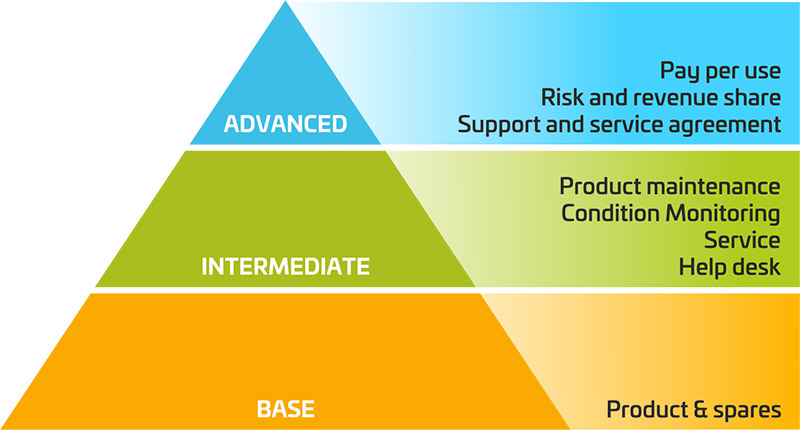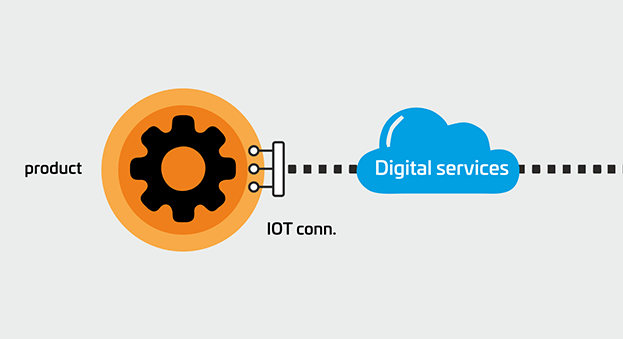The concept of servitization
Traditionally, and for good reasons, manufacturers have focused on selling hardware (e.g. machines, components) and based their business model and success on the outstanding quality of their products. But now it looks as if these days may well be over. Manufacturers are faced with rising competition, commoditization, and the accompanying price pressure. Now, Digital transformation opens up growth opportunities in these challenging times through the use of technology.
„If it is not you to change, the competition certainly will“
How does it work?
There are 3 levels of servitization within manufacturing:
Product provisioning: You are doing this already – it means to build the product and sell it. The product changes ownership and moves to the customer paying the one-off price negotiated.
Aftersales: This means adding servicing, repairs and condition monitoring. In addition to selling the product it provides an ongoing revenue stream for the maintenance contract.
Advanced Services: This goes far beyond selling a product. Instead of a product you are selling a service to the customer. In this case it is the service providers responsibility to keep the service up and running. The use embedded sensors and connectivity play an important role in keeping the service up and running. In many cases this is a subscription model in which the consumer pays for the outcome and use of the service.

Servitization



Benefits of the servitization business model
 Growth in revenue and profit
Growth in revenue and profit Improved responses to customer needs
Improved responses to customer needs Customer pays for the value/service he receives
Customer pays for the value/service he receives Improved product Innovation
Improved product Innovation Creates new and continuous revenue streams
Creates new and continuous revenue streams Increasing customer loyalty & retention
Increasing customer loyalty & retention Setting higher barriers to competition
Setting higher barriers to competition
These potential benefits causes a growing number of manufacturers to explore the servitization business model.
IOT and big data play an important role in the services that are now being offered. Networked sensors are incorporated in their products to collect data in order to inform management decisions. The sensors gather data on the health of components, potential maintenance issues, and other relevant performance indicators. This knowledge can then be used to inform decisions that drive efficiency, cost-reductions, and other benefits for clients.


